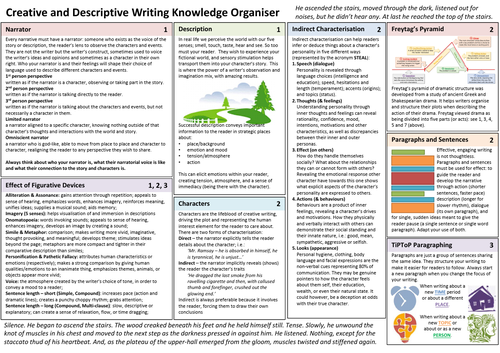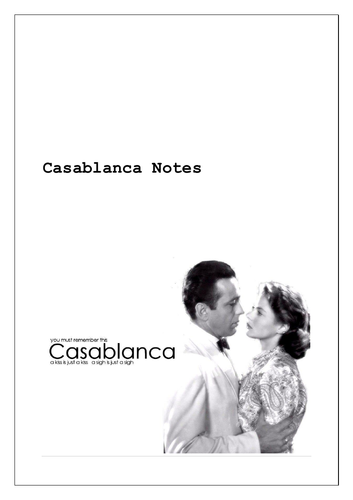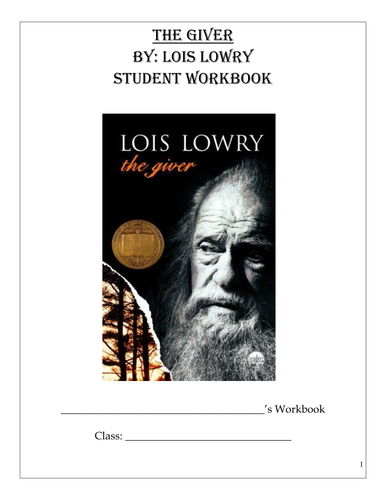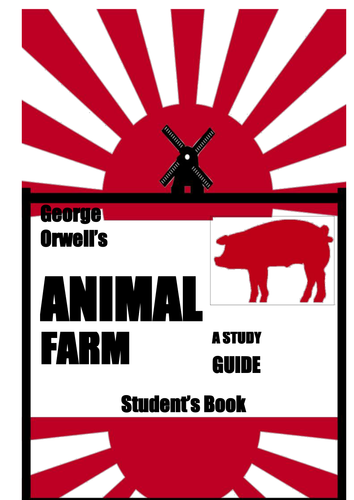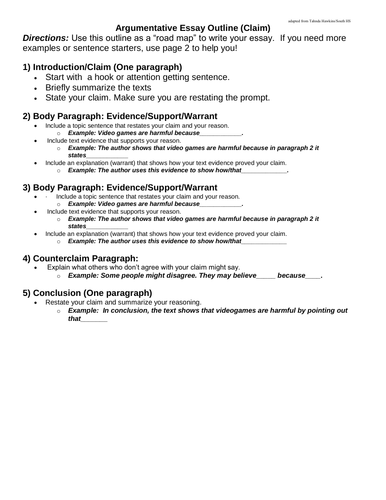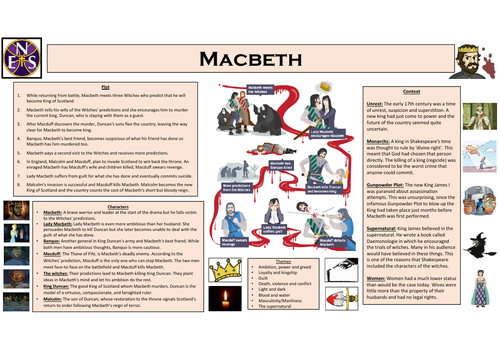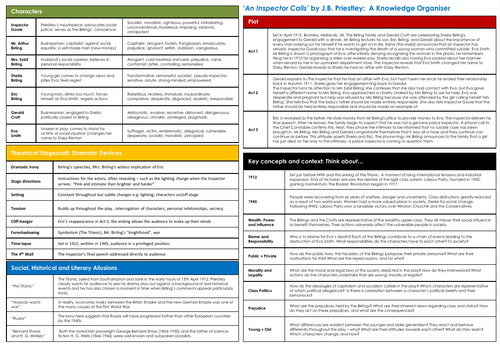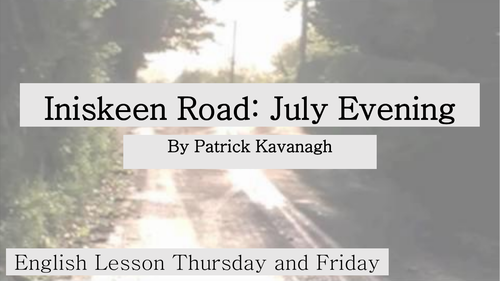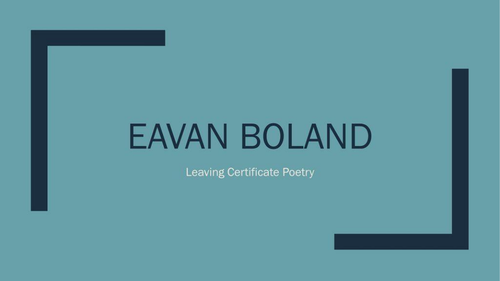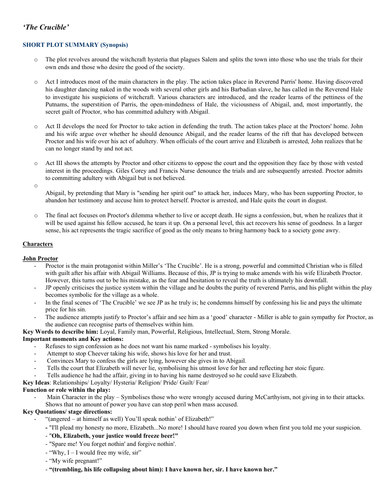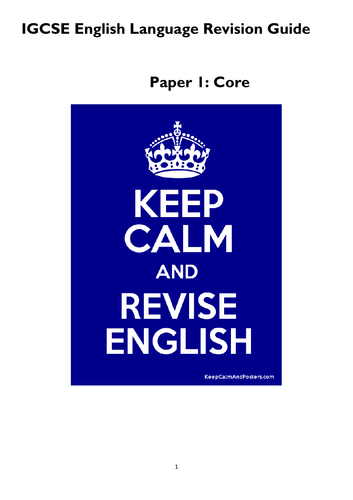
428Uploads
103k+Views
7k+Downloads
English language arts

Creative and Descriptive Writing Knowledge Organiser
Creative and Descriptive Writing Knowledge Organiser

Casablanca Film Notes and Worksheet on Film Arc
Casablanca Film Notes and Worksheet on Film Arc
Plot
Characters
Themes
worksheet

Lord of the Flies Study Guide
Easy differentiated Study guide with key vocabulary, plot close test, chapter questions and bullet point easy synopsis of each chapter

Patrick Kavanah Inniskean Road July Evening Worksheet
Patrick Kavanah Inniskean Road July Evening Worksheet and tasks
Summarized into topics:
Patrick Kavanagh and "On Raglan Road" poem/song
Diary entry from Patrick Kavanagh's perspective on the night of the poem
Drawing representing the song
Poem from the perspective of someone going to Billy Brennan's dance
Two drawings of Billy Brennan's dance - one in 1936 and one in a modern setting
Additional research on Patrick Kavanagh and his life.

Elizabeth Bishop Essay Planner
The Elizabeth Bishop guide is a short guide designed to help Leaving Certificate English students understand and analyze Elizabeth Bishop’s poetry. The document provides detailed explanations, strategies for writing poetry essays, and key insights into Bishop’s themes and stylistic techniques.
Key Features of the Document:
Introduction to Elizabeth Bishop’s Poetry:
The document begins by introducing Elizabeth Bishop as a poet whose work often delves into themes of personal experience, nature, survival, and identity. It emphasizes her distinctive style, marked by detailed observation and emotional restraint.
Understanding the Leaving Certificate Poetry Essay:
Students are guided on how to approach a poetry essay, focusing on the themes and stylistic features that are commonly examined in Bishop’s work. It outlines the importance of identifying key words in the question and how to structure a response around them.
Past Exam Questions:
The document includes a section with past exam questions related to Bishop’s poetry (e.g., from 2009 and 2013). These questions focus on analyzing the themes and language used by Bishop, providing students with real-world examples of what to expect in their exams.
Sample Essay Structure:
A step-by-step breakdown of how to write a poetry essay is provided. This includes guidance on:
Crafting a strong introduction that mentions the poet and key themes.
Writing body paragraphs that analyze individual poems, with a focus on techniques like imagery, simile, and metaphor.
Ending with a thoughtful conclusion that summarizes the main points and offers a personal reflection.
Sample Essay Paragraph:
The document includes a sample paragraph based on a past exam question. It demonstrates how to analyze a specific poem (e.g., The Fish) and link it to the themes of survival and resilience using vivid imagery and personal reflection.
Key Techniques in Bishop’s Poetry:
A list of important literary techniques used by Bishop, such as:
Imagery: Her ability to paint vivid pictures through descriptive language.
Symbolism: How objects or creatures in her poems symbolize larger human experiences.
Tone: The mood or attitude conveyed in her poems.
Personification: Attributing human qualities to non-human objects, often creating empathy for the subjects of her poems.
Practice Questions and Scaffolding:
The document provides students with a practice essay question and a clear scaffold for structuring their responses. The scaffold helps students break down their analysis and use quotes effectively in their essays.

King Lear Act 2 Revision Sheet Visual Guide for Students
This visual revision sheet for Act 2 of King Lear is designed to help students quickly and effectively review the key events, characters, and themes of the act. It includes emojis and student-friendly notes to make the content engaging and easier to understand.

Visual Revision Guide Kin Lear Act 3
This visual revision guide for Act 3 of King Lear is a powerful depiction of the scene’s central themes and emotions, all represented through symbolic imagery. At the center stands an old man, representing King Lear, battling against a fierce storm with dark clouds and violent winds, symbolizing both the literal storm on the heath and Lear’s inner turmoil. Surrounding Lear are key visual elements that represent significant moments and themes from the act:
A broken heart symbolizes betrayal, referencing both Edmund’s betrayal of Gloucester and the betrayal Lear feels from his daughters, Goneril and Regan.
A crying face conveys Lear’s emotional anguish as he struggles with feelings of abandonment and madness.
A handshake symbolizes loyalty, highlighting Gloucester’s steadfastness in helping Lear despite the risks involved.
The absence of text allows for the focus to be purely on these emotive symbols, making it an effective, visually appealing revision aid for students to interpret Act 3’s core messages at a glance.

Suffering in King Lear
“Suffering in King Lear: A Journey from Pride to Redemption”
In King Lear, Shakespeare masterfully explores the transformative power of suffering as a force that strips away pride and reveals the core of human vulnerability. This comprehensive guide examines Lear’s emotional, physical, and existential suffering, charting his journey from a powerful yet hubristic king to a humbled, self-aware father.
Through pivotal moments of betrayal, loss, and reflection, Lear’s suffering escalates—from the folly of dividing his kingdom in Act 1 to his physical and mental breakdown in the storm of Act 3, and ultimately to his tragic yet redemptive reunion with Cordelia in Act 5. Alongside Lear, other characters such as Gloucester mirror the theme of suffering, reinforcing the play’s universal message about the cost of self-realization.
Perfect for students, this resource presents the theme of suffering in a clear, structured format with key points, thematic insights, and memorable quotes for each act. Discover how Shakespeare uses suffering not just as a narrative device, but as a profound commentary on power, identity, and redemption.
Bundle

Visual Guide King Lear
The emoji visual guide for King Lear offers a simplified, engaging way to understand the play’s complex storyline, with each emoji representing key characters, events, and emotional tones in each act. Here’s a breakdown for each act:
Act 1 – The Kingdom’s Division 👑⚔️💔
The crown emoji represents King Lear and the kingdom.
Crossed swords symbolize the impending conflict and power struggle.
The broken heart conveys Lear’s pain as he divides his kingdom, expecting love but facing betrayal.
Act 2 – Rising Tensions 🏰👥👿
The castle represents the royal setting.
Two people emoji illustrate alliances and manipulations among characters.
The devil face highlights the deceitful plots by Goneril, Regan, and Edmund.
Act 3 – The Storm and Betrayal 🌩️🌲💨👑
The storm emoji captures the raging tempest that Lear endures, symbolizing his inner turmoil.
Trees indicate the forest, where many scenes unfold as Lear becomes homeless.
The wind emoji represents Lear’s vulnerability and madness.
The crown reminds us of Lear’s identity, now stripped of power.
Act 4 – Compassion and Schemes 👨🦯💔👸❤️
A man with a cane shows Gloucester’s blindness, and his loyalty despite his hardship.
The broken heart symbolizes the continued betrayal Lear faces from his daughters.
The queen (👸) and heart (❤️) show Cordelia’s compassion as she returns to save her father.
Act 5 – Tragedy Unfolds ⚔️💀👿💔👨👧⚰️
Crossed swords represent the battle between France and England.
The skull conveys the deaths and tragic fate of many characters.
The devil emoji highlights Edmund’s deceit and betrayal.
A broken heart shows the loss and sorrow felt, particularly by Lear.
The father-daughter emojis (👨👧) illustrate Lear’s heartbreaking reunion with Cordelia.
The coffin represents the tragic conclusion, marked by death and grief.

IGCSE English Language Revision Guide Paper 1 +2- Cambridge
IGCSE English Language Revision Guide Paper 1+2

